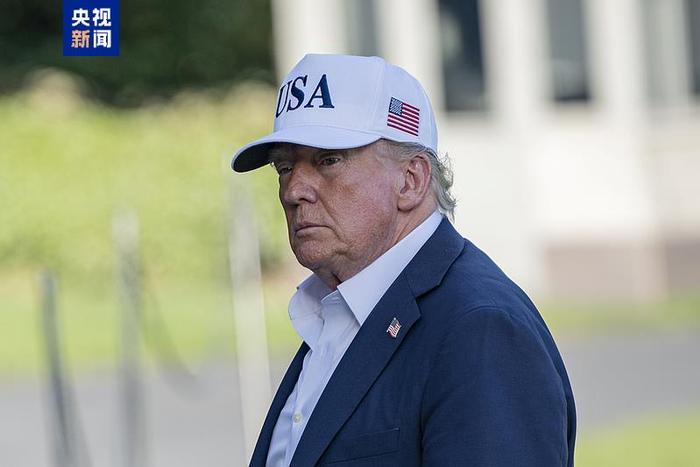
On the 7th local time, President Donald Trump sent a letter to Japan, South Korea, and other 14 countries threatening to impose tariffs. Subsequently, he signed an executive order extending the “countervailing duty” moratorium until August 1.
Over the past three months, the United States has been negotiating with multiple trading partners for so-called “countervailing duties,” but the progress has significantly fallen short of expectations. Currently, only trade agreements have been reached with the UK and Vietnam, but the details of these agreements are still being finalized. Negotiations with the EU, Japan, South Korea, India, and others have been challenging.
Trump publicly threatens to impose tariffs on 14 countries.
On the 7th local time, President Donald Trump declared that tariffs would be imposed on imported products from 14 countries starting from August 1:
Japan, South Korea, Kazakhstan, Malaysia, Tunisia: 25%
Bangladesh, Serbia: 35%
Cambodia, Thailand: 36%
Trump: If tariffs are raised against the US, an equivalent amount will be added.
That day, Trump posted his letter to Japanese Prime Minister Shinzo Abe and South Korean President Moon Jae-in on his own “Reality Social” website, stating that the new tariffs would not include tariffs on other industries. In the two nearly identical letters, Trump wrote: “Please understand that the figure of 25% is far below the level needed to eliminate our trade deficit with your country.”
Trump warned that if Japan and South Korea raise tariffs as a response, the US would also increase tariffs by an equivalent amount.
Trump wrote: “As you know, if companies in Japan (or South Korea) or within your country decide to build or produce products in the United States, we will not impose tariffs. In fact, we will do everything possible to approve quickly, professionally, and routinely—in other words, in just a few weeks.”
Trump stated that the trade deficit has constituted a significant threat to the economy and even national security of the United States, thus necessitating change. This tariff will be independent of various industry-specific tariffs.
Additionally, any attempt to circumvent the tariff by relocating through a third country will also be subject to higher tariffs. Trump stated that companies choosing to build factories or produce products within the United States do not need to pay this tariff. Should these countries decide to increase tariffs on the US, the US will impose an equivalent amount of tariffs on top of the existing rates.
The “Tariff Allocation” Extension Period Extended to August 1st
On July 7th, local time, President Trump signed an executive order to extend the so-called “Tariff Allocation” extension period, extending the implementation date from July 9th to August 1st.
Extension of Final Deadline: U.S. Officials Pressure Frequently
Over the recent weekend, including Treasury Secretary Mnuchin and other high-ranking U.S. officials, they frequently made statements. On one hand, they pressured their trading partners to accelerate negotiations, and on the other hand, they hinted that countries that failed to reach an agreement with the US could choose to extend the negotiation deadline.
Mnuchin, in an interview with CNN on the 6th, stated that President Trump would send letters to his trading partners this week, informing them of the tariff rates planned by the US. For countries that did not reach a trade agreement with the US before August 1st, the tariff rates will return to the “Tariff Allocation” level announced in April.
Mnuchin at that time refused to confirm whether August 1st was the latest deadline to the media, saying, “If you want to speed up, then act.”
Tariff Negotiations Progress Significantly Below Expectations
South African President Ramaphosa stated on July 7th that South Africa will continue to promote a more balanced and mutually beneficial trade relationship with the United States through diplomatic channels. South Africa noted that the US government has promised to adjust its tariff rate to 30% based on the results of the negotiations between both sides.
European Commission President Ursula von der Leyen recently stated that the EU is “ready to reach a principled agreement with the United States on tariff issues.” However, if negotiations fail, the EU will firmly take retaliatory measures to protect the European economy.
Japan and the US have conducted multiple rounds of negotiations but have yet to achieve a breakthrough.
日本首相石破茂6日表示,日本已为所有可能的关税情况做好准备,将“坚定立场”,捍卫自身利益。
韩国总统李在明3日表示,与美国的谈判看起来非常困难,双方都不是十分确定“想要什么”。他说,无法确定能否在7月8日前完成谈判。
将尽最大努力与美国达成协议,并尽最大努力在谈判中取得以韩国国家利益为中心、务实共赢的结果。
印度方面宣布,已向世界贸易组织通报,计划对部分美国产品征收报复性关税,以回应美方对从印度进口的汽车及零部件加征关税的措施。
越共中央总书记苏林日前表示,建议
美方尽快承认越南市场经济地位,并取消美对越部分高科技产品的出口限制。
美媒:高关税将由美国消费者埋单
根据美国商务部发布的数据,去年美国总共从特朗普发出信函的其中7个国家进口了3510亿美元的商品。日本和韩国,作为美国第六和第七大贸易伙伴,去年共向美国出口了价值2800亿美元的商品。
美国媒体分析,提高商品关税会导致美国消费者支付更高的价格。美国从韩国和日本进口的主要商品包括汽车、汽车零部件、半导体、药品和机械。特朗普政府已经对其中许多商品征收或威胁征收行业特定关税。
一些国家则是某些特定商品的主要来源地之一。
例如,南非将面临30%的关税,而去年美国进口的铂金约有一半来自南非。
去年马来西亚是美国进口半导体的第二大来源国,美国从马来西亚购买了价值180亿美元的半导体。
The Associated Press reported that these letters were not Trump’s final decision on tariffs, merely another episode in the trade disputes that have led to global concerns over economic growth slowing down. The report stated that tariffs make it easier for the United States and other countries to fall into recession. However, Trump firmly believes that tariffs will revive domestic manufacturing in the US and provide funds for his “big and beautiful” tax cut bill.
The Dow Jones Industrial Average fell by 400 points upon receipt of the news.
Following President Trump’s letter to several countries on the 7th, stating new tariffs on imported goods, the US stock market closed lower on that day.
The Dow Jones Industrial Average closed down 422.17 points, a decrease of 0.94%, while the Standard & Poor’s 500 Index fell by 0.79%, and the Nasdaq Composite Index dropped by 0.92%.
Currently, market concerns are escalating. Investors fear that if the trade war heats up again, the chaos from earlier this year’s financial market crash could recur.